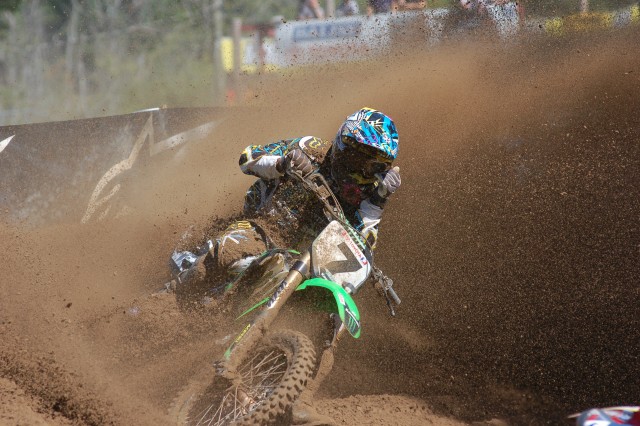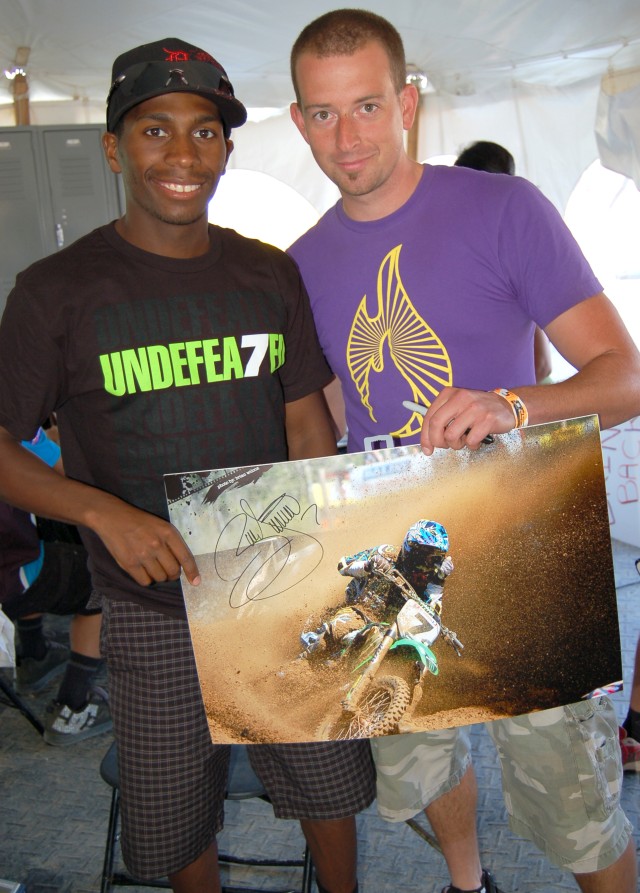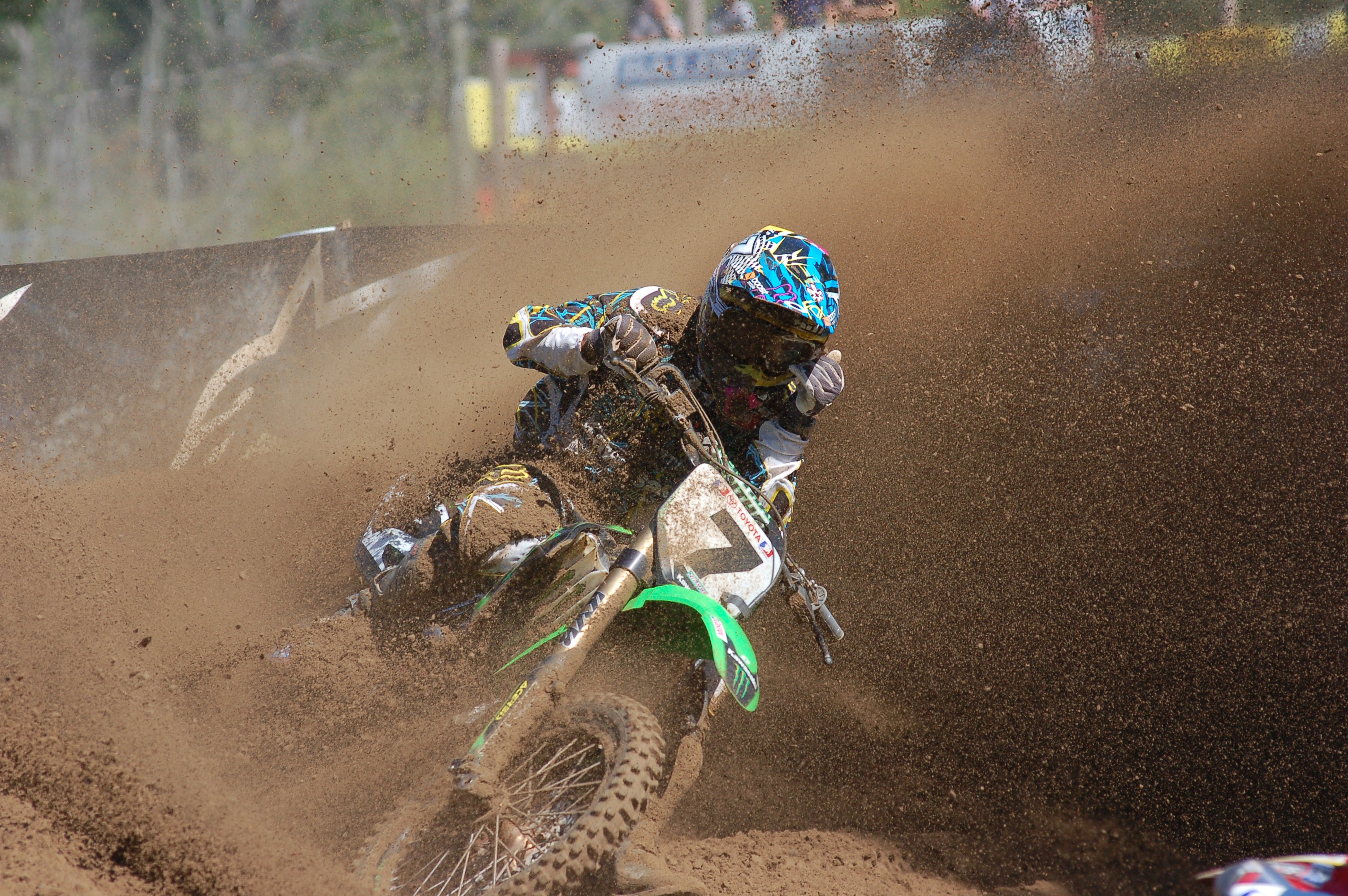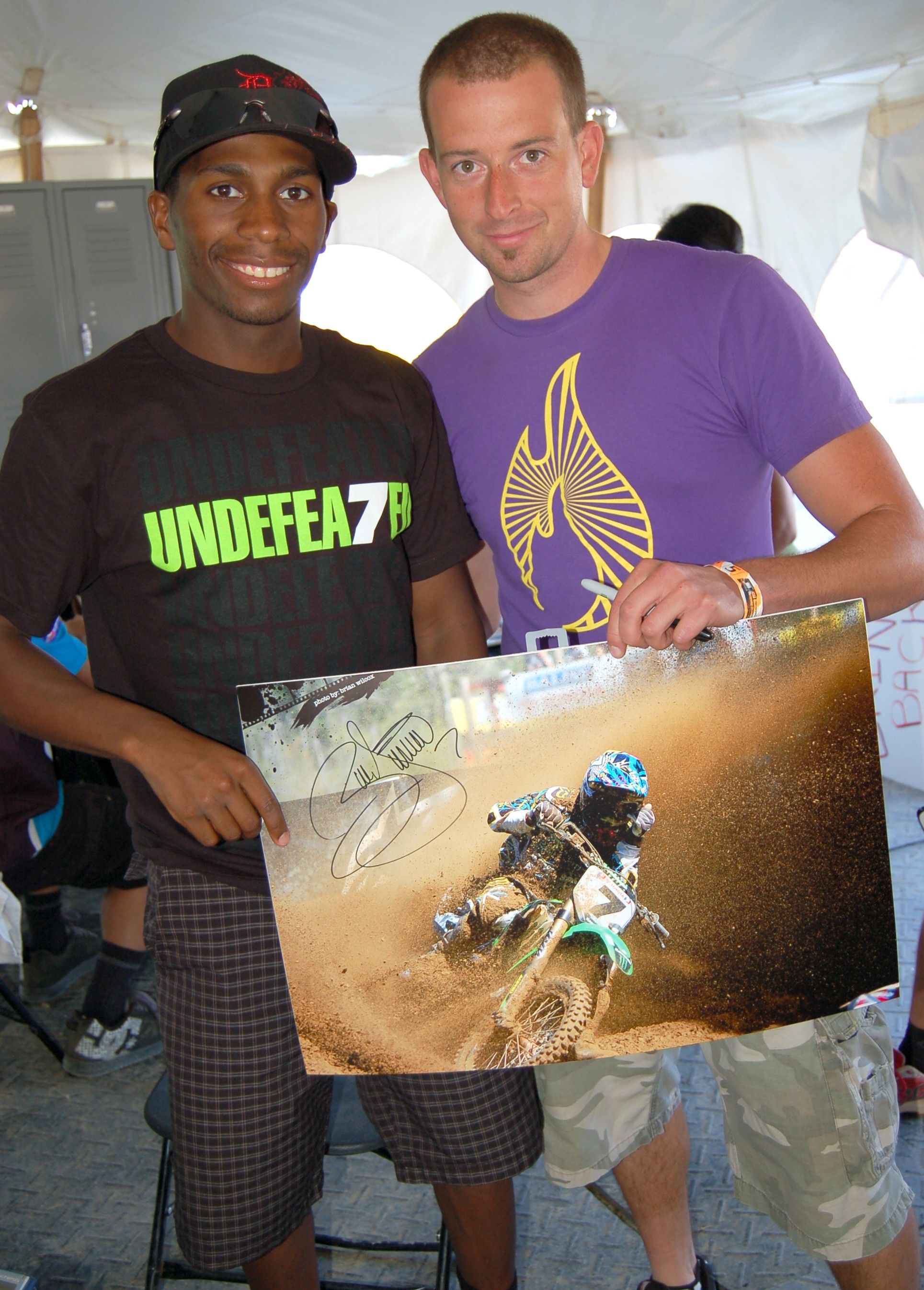TOBYHANNA ARMY DEPOT, Pa. - BIKES...camera... action! Those are the only three things on Brian Wilcox's mind when he gears-up for a dirt flying, height defying motocross photo shoot.
Bored with what he refers to as "normal" sports like baseball, Wilcox, an electronics mechanic in the Intelligence, Surveillance and Reconnaissance Directorate, began searching for something exciting, dangerous and totally different. He found his calling somewhere around age 13, claiming, "I was hooked," after watching his first motocross race on television. Motocross is a form of motorcycle racing held on enclosed off-road courses.
He began to ride and compete in the sport, but as fate would have it, other things became more important as he got older and he decided to stop racing motorcycles.
"I wanted to stay in the sport somehow and realized that if I had a camera I was still part of the action," he explains, adding that the first time he ever picked up a camera was in 2006.
With a little help from the right people, a passion for dirt in his face, and an eagerness to learn all he could about photography, Wilcox became an amateur photographer, spending every weekend snapping photos with his Nikon D50.
He believes his background in electronics helped him learn how to use the manual camera and prior knowledge of electronics assisted when it came to fixing and working with the "little parts of a camera."
He says the most challenging aspect of the job is dealing with the weather and lighting. "Since we shoot outdoors we have to work with what we're given," he explains. "You have to capture that rider in the moment you want and you only have a hundredth of a second to get the photo you want."
The motocross season runs from May to September. During the season he travels every weekend to different places along the east coast. He's captured different events such as the Mini Olympics in Florida and the Amateur National Motocross Championship races in Tennessee. Wilcox also submits photos and articles to online magazines, such as Vurbmoto.
His camera is dirty and abused from large amounts of roost (the dirt that flies off of the rear tire) by the end of the race, but he says that's one of the best aspects of the high energy photography.
"There are 40 bikes lined-up at the gate when a race starts. Once the gate is dropped, those bikes take off and they're all going around a turn that is meant for about five bikes," he says, with spirit and emotion. "You're right there trying to capture that action and it's pretty scary." He notes that a lot of photographers are pelted by rocks but are willing to take a hit for "that shot."
Wilcox says his most memorable experience can be found in a photo of James Stewart, a motocross rider and second rider to go undefeated in a season. "I was told it was an epic shot," he notes. Someone in the industry saw the photo and hung it in the media tent at the next race.
"James was impressed with the photo and the editor of [motocross magazine] RacerX liked it. I guess I was just in the right place at the right time, and saw the right shot." The photo was published as part of a two-page spread in the December issue of the magazine and was recognized by Vurbmoto as one of the top 25 photos of 2008.
His branch supervisor, Jeff O'Neill, describes Wilcox as someone who is very detail-oriented and immerses himself in his work. "He's enthusiastic about his work, regularly taking initiatives to improve processes and provide a better quality product," O'Neill notes. "He's always paying attention to detail."
Wilcox jokes that since his coworkers found out about his photography skills he has been deemed the resident photographer in the Miniature Multiple Threat Emitter System (Mini MUTES) Branch. One aspect of his job is the tear down and build up of the Mini MUTES system and he says they like to take photos before and after the overhaul of each system.
The amateur motocross photojournalist says he isn't interested in any other type of photography though and claims that his favorite part is the intensity.
"Once you're out on the track and inches away from a guy going 60 miles per hour, dirt flying in the air, you experience a huge rush." He says his main drive behind his photography is to encourage people to attend races.
"If you saw what these kids go through, such as the hard training, injuries that they ride with and heartaches, you'd see the sport is much more physical than other mainstream sports." He believes this is a good way for the sport to get more exposure.
Wilcox says that by viewing motocross through a camera, he observes more than the average fan.
"I see the lowest points of the riders and I have the chance to talk to them about stuff other than motocross. You get to see a different side of the riders."
He sees the high jumps they make, the low falls they take and all the dirt in between. He believes those are the perfect poses, for the perfect photos.
Tobyhanna Army Depot is the largest full-service Command, Control, Communications, Computers, Intelligence, Surveillance, and Reconnaissance maintenance and logistics support facility in the Department of Defense. Employees repair, overhaul and fabricate electronics systems and components, from tactical field radios to the ground terminals for the defense satellite communications network.
Tobyhanna's missions support all branches of the Armed Forces. The depot is the Army Center of Industrial and Technical Excellence for Communications-Electronics, Avionics, and Missile Guidance and Control Systems and the Air Force Technology Repair Center for ground communications and electronics.
About 5,700 personnel are employed at Tobyhanna, which is located in the Pocono Mountains of northeastern Pennsylvania.
Tobyhanna Army Depot is part of the U.S. Army CECOM Life Cycle Management Command. Headquartered at Fort Monmouth, N.J., the command's mission is to research, develop, acquire, field and sustain communications, command, control, computer, intelligence, electronic warfare and sensors capabilities for the Armed Forces.




Social Sharing